
ATW-INTERNATIONAL JOURNAL FOR NUCLEAR POWER
metrics 2024
Shaping the Future of Nuclear Power Generation
Introduction
ATW - International Journal for Nuclear Power is a premier journal dedicated to advancing the understanding and application of nuclear technology within the energy sector. Published by INFORUM Verlags-Verwaltungsgesellschaft mbH, this esteemed publication provides a platform for researchers, professionals, and students to disseminate cutting-edge research, practical applications, and critical analyses related to nuclear power generation. Although it has discontinued coverage in Scopus since 2012, its long-standing contributions to the field since 1996 underscore its significance and relevance. The journal aims to bridge the gap between theoretical insights and real-world applications, ensuring that stakeholders are well-informed on the latest trends, safety protocols, and innovations in nuclear power. With a commitment to fostering knowledge dissemination and collaboration, ATW continues to be an essential resource for anyone involved in the nuclear energy landscape.
Metrics 2024
 -
- 0.20
0.20 0.20
0.20 -
-Metrics History
Rank 2024
IF (Web Of Science)
JCI (Web Of Science)
Quartile History
Similar Journals
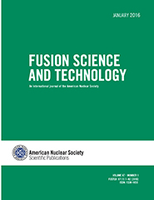
FUSION SCIENCE AND TECHNOLOGY
Pioneering breakthroughs in fusion technology for a brighter tomorrow.FUSION SCIENCE AND TECHNOLOGY is a leading peer-reviewed journal published by Taylor & Francis Inc., dedicated to the advancement of knowledge in the fields of nuclear science, engineering, and fusion technology. With an impact factor that reflects its growing significance, this journal provides a platform for innovative research that addresses the challenges and opportunities within Civil and Structural Engineering, Materials Science, Mechanical Engineering, and Nuclear Energy and Engineering. Its open access option facilitates wider dissemination of groundbreaking research, enhancing visibility and accessibility for researchers, professionals, and students alike. As a member of the Q2 and Q3 Quartiles across various categories—demonstrating its reputable standing among peers—the journal plays a crucial role in fostering collaboration and sharing the latest scientific discoveries in fusion and related technologies from 2001 until 2024. This makes it an essential resource for anyone engaged in the multidisciplinary aspects of fusion science, contributing to the development of sustainable energy solutions.
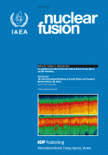
NUCLEAR FUSION
Illuminating the path to sustainable energy solutions.NUCLEAR FUSION is a prestigious academic journal published by IOP Publishing Ltd, dedicated to advancing the field of nuclear and high-energy physics. With a significant impact factor and recognized among the top-tier journals, it boasts a Q1 ranking in both Condensed Matter Physics and Nuclear and High Energy Physics as of 2023. This journal, which has been published continuously since 1969, serves as a vital platform for researchers, professionals, and students exploring the latest advancements in fusion energy, plasma physics, and the intricate phenomena associated with high-energy states of matter. By disseminating original research, comprehensive reviews, and interdisciplinary studies, NUCLEAR FUSION strives to foster innovation and collaboration in pursuit of sustainable energy solutions, contributing significantly to the scientific community’s understanding of nuclear fusion processes. While the publication offers access options that enhance its reach, its rigorous peer-review process ensures the highest quality of scholarly communication.
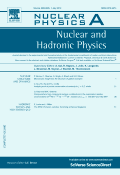
NUCLEAR PHYSICS A
Unveiling the Mysteries of Nuclear InteractionsNUCLEAR PHYSICS A, published by Elsevier, is a leading international journal dedicated to the fields of Nuclear and High Energy Physics. With an ISSN of 0375-9474 and E-ISSN 1873-1554, the journal has been pivotal in advancing research since its inception in 1967 and is set to continue influencing the discipline through 2025. It holds a commendable Q2 classification in the 2023 category of Nuclear and High Energy Physics, ranking 32nd out of 87 journals in its field according to Scopus, placing it in the 63rd percentile. NUCLEAR PHYSICS A provides valuable insights and disseminates cutting-edge research, aiding researchers, professionals, and students in their academic and practical pursuits. Though it does not currently offer open access, the journal remains a vital resource for those engaged in the exploration of nuclear phenomena and theoretical advancements in high-energy physics.
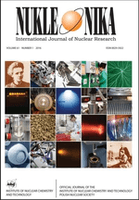
NUKLEONIKA
Innovating Tomorrow's Energy SolutionsNUKLEONIKA, published by SCIENDO, is a leading open access journal that has been serving the scientific community since its establishment in 1968. Focused on the domains of Nuclear and High Energy Physics, Condensed Matter Physics, and Nuclear Energy and Engineering, this journal provides a platform for innovative research and technological advancements in a variety of interdisciplinary fields. With an impressive history of publications and a current Q3 ranking in several categories, including Safety, Risk, Reliability and Quality and Waste Management and Disposal, NUKLEONIKA is recognized for its significant contributions to scientific discourse. Open access since 2014, the journal ensures that all research outputs are freely available, facilitating broad dissemination and accessibility for researchers, professionals, and students alike. Located in the heart of Warsaw, Poland, NUKLEONIKA aims to inspire collaborative efforts and foster a deeper understanding of complex physical phenomena and their practical implications.

ATOMIC ENERGY
Illuminating the path of innovation in atomic science.ATOMIC ENERGY is a distinguished journal published by SPRINGER, focusing on pivotal advancements and research within the field of Nuclear Energy and Engineering. With an ISSN of 1063-4258 and an E-ISSN of 1573-8205, this journal has been a critical resource since its inception in 1956, serving both historic and contemporary scientific inquiries into nuclear technologies. Currently positioned in Q3 of the Nuclear Energy and Engineering category, ATOMIC ENERGY ranks 49 out of 77 in Scopus, representing a percentile of 37%, highlighting its relevance in the research community. While it is not an open access journal, it continues to draw a diverse readership eager to engage with the latest findings and innovations in nuclear science. The journal’s objectives include fostering collaborative research, sharing expertise, and addressing contemporary challenges in nuclear energy. As such, ATOMIC ENERGY remains an essential platform for researchers, professionals, and students alike, contributing significantly to the ongoing dialogue in the field.

Eksplorium-Buletin Pusat Teknologi Bahan Galian Nuklir
Exploring Innovations in Nuclear Resource ManagementEksplorium-Buletin Pusat Teknologi Bahan Galian Nuklir is a pivotal open-access journal dedicated to the field of nuclear material technology, published by the Pusat Teknologi Bahan Galian Nuklir-BATAN. Since its inception in 2011, this journal has been committed to disseminating high-quality research that explores advancements in the utilization and management of nuclear materials, ensuring that vital knowledge is accessible to researchers, professionals, and students globally. With an ISSN and E-ISSN of 0854-1418, Eksplorium serves as a valuable platform for contributors looking to share their findings, fostering collaboration and innovation in a field that is increasingly relevant to energy sustainability and environmental safety. Situated in Jakarta, Indonesia, this journal not only enhances the scientific landscape but also champions open access principles to promote the global exchange of knowledge.
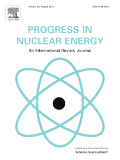
Progress in Nuclear Energy
Leading the charge in nuclear energy advancements.Progress in Nuclear Energy is a premier academic journal published by Pergamon-Elsevier Science Ltd, dedicated to advancing the field of nuclear energy and its applications. With an ISSN of 0149-1970 and an E-ISSN of 1878-4224, this journal has made significant contributions to the scholarly community since its inception in 1977. The journal is recognized for its rigorous peer-reviewed research and has achieved impressive standings in multiple categories, including being ranked Q1 in Nuclear Energy and Engineering and Safety, Risk, Reliability and Quality for 2023. Its impact factor highlights the relevance and influence of the published work within the field. Researchers, professionals, and students seeking a comprehensive overview of current developments will find valuable insights in its pages. Covering a broad time span of publishing years, from 1977 through 2024, Progress in Nuclear Energy remains an essential resource for those involved in the energy sector, particularly in designing sustainable and safe nuclear technologies.

PHYSICAL REVIEW C
Leading the Charge in Nuclear and High-Energy PhysicsPHYSICAL REVIEW C is an esteemed journal published by the American Physical Society, dedicated to advancing knowledge in the fields of nuclear and high-energy physics. With a proud ISSN of 2469-9985 and an E-ISSN of 2469-9993, it has established itself as a leading journal, currently ranked in the Q1 category for its field in 2023, positioning itself in the top tier of scholarly publications. Based in the heart of the United States, at One Physics Ellipse, College Park, MD, PHYSICAL REVIEW C is known for its rigorous peer-review process and is a vital platform for researchers to share their pioneering findings. As part of a prestigious lineup backed by an impressive impact factor, this journal garners significant attention, reflected in its Scopus ranking as #18 out of 87 in the Nuclear and High Energy Physics category, placing it within the 79th percentile. While it currently does not offer open access options, it remains an essential resource for professionals and students seeking to deepen their understanding of nuclear interactions, reaction dynamics, and the fundamental principles governing subatomic particles. The convergence of innovative research from 2016 to 2024 makes it a timely reservoir for groundbreaking studies, thus reinforcing its importance in the scientific community.

Nuclear Physics and Atomic Energy
Empowering scientists through open-access innovation.Nuclear Physics and Atomic Energy is a reputable open-access journal that focuses on the fields of nuclear physics and high-energy physics, providing a forum for researchers, professionals, and students to share their findings and advancements. Published by the Institute of Nuclear Research, National Academy of Sciences of Ukraine, this journal has been committed to disseminating knowledge since its inception in 2006, ensuring that scientific advancements remain accessible to a global audience. With an ISSN of 1818-331X and an E-ISSN of 2074-0565, the journal features a diverse array of articles that span the continued exploration and application of nuclear phenomena. Although currently categorized in the Q4 quartile for Nuclear and High Energy Physics in 2023, the journal is steadily working towards increasing its impact and engagement within the academic community. With a Scopus rank of #74 out of 87 in its category, it serves as a valuable resource for advancing crucial research in a vital scientific area. Researchers are encouraged to contribute their innovative studies to foster collaboration and knowledge sharing in this dynamic field.
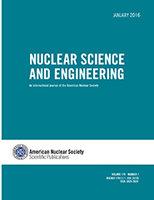
NUCLEAR SCIENCE AND ENGINEERING
Empowering Research in Nuclear Energy and EngineeringNUCLEAR SCIENCE AND ENGINEERING, published by Taylor & Francis Inc, is a leading journal in the field of nuclear energy and engineering, providing a vital platform for disseminating cutting-edge research and advancements from both academia and industry. With an ISSN of 0029-5639 and an E-ISSN of 1943-748X, the journal boasts a notable impact factor and is categorized in the Q2 quartile for 2023, reflecting its influence and quality in the field. Covering a comprehensive scope from the inception of nuclear technology in 1969 to contemporary advancements forecasted for 2024, it ranks #38 out of 77 in the Scopus Energy – Nuclear Energy and Engineering category, placing it in the 51st percentile. Although the journal is not open access, it remains essential for researchers, professionals, and students seeking to stay abreast of the latest developments and innovations in nuclear science. Located in the heart of Philadelphia, NUCLEAR SCIENCE AND ENGINEERING contributes significantly to the advancement of nuclear engineering knowledge and practice, making it a crucial resource for anyone involved in this dynamic field.